Forsythia Leaves Turning Yellow – Reasons For Yellow Leaves On Forsythia
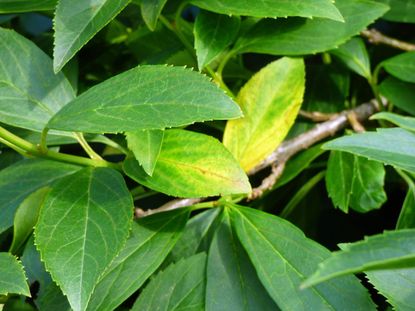

Forsythias are hardy, attractive bushes which delight us every spring with their early, golden blooms. The plants are relatively unbothered by insects and can withstand cold, heat and short periods of drought, but fungal diseases are a serious threat to their beauty. If you see your forsythia leaves turning yellow, it could be a sign of a significant fungal issue. Yellowing forsythia bushes are normal before fall leaf drop but during the growing season it’s time for action.
Why are Forsythia Leaves Turning Yellow?
Periods of rain during the warmer seasons create a humid, moist atmosphere which is perfect for the formation of fungus. Fungal spores can often live in soil for a long time and even overwinter there, bursting into infectious displays at the first sign of favorable weather. There are several fungal diseases that may be plaguing yellowing forsythia bushes. A fungicide can be helpful but it is best to try to identify the disease for more effective treatment. If you can rule out overcrowding, dry conditions and topical injury as well as any pests, you are left with a plant that probably has a fungal disease. Yellow leaves on forsythia occur from a variety of diseases, most of which can trace the vector to grafting or mechanical introduction, although disturbed soils may harbor spores for years. Maintaining a healthy plant through regular watering, fertilization, pruning and mulching can help minimize the damage from fungal disease. Forsythia leaf problems will not usually kill the plant, but due to its ornamental function, the disease can mar the beauty and dim the plant’s vigor.
Diagnosing Yellow Leaves on Forsythia
A forsythia with yellow leaves may be occurring due to any number of diseases. Below are the more common ones:
- Yellow veins may indicate tobacco ringspot virus or arabis mosaic virus. Each is generally introduced through nematodes.
- Yellow, black or brown spots that form a larger necrotic tissue can mean that forsythia with yellow leaves are caused by anthracnose, one of the most common fungal diseases on ornamental plants. The yellow tissue may also be colonized by tiny fruiting bodies.
- Sclerotinia sclerotiorum begins with yellow leaves but advances to wilted stems and damage deepening to brown.
Treating Forsythia Leaf Problems
Fungicides are generally only effective if sprayed before the plant shows signs of disease. This is usually just at leaf formation. Once you notice a forsythia with yellow leaves, it is too late to make use of a fungicide. Treatment would include pruning to open the canopy and allow airflow through the plant and cleaning up any dead plant material around it. Minimize the splash of soil bound spores by watering gently at the base of the plant. Use a solution of 70 percent alcohol to clean any tools used to prune or rake around the plant. Maintain the plant’s vigor with regular watering, feeding and sterile pruning. The next year, in early spring, use a fungicide spray to prevent future occurrences. Forsythia leaf problems don’t announce the death knell of the plant but they are inconvenient and unsightly. Early prevention is key to preventing further issues.
Gardening tips, videos, info and more delivered right to your inbox!
Sign up for the Gardening Know How newsletter today and receive a free download of our most popular eBook "How to Grow Delicious Tomatoes."

Bonnie Grant is a professional landscaper with a Certification in Urban Gardening. She has been gardening and writing for 15 years. A former professional chef, she has a passion for edible landscaping.
-
 Urban Beekeeping Guide: Top Tips For Raising Bees In The City
Urban Beekeeping Guide: Top Tips For Raising Bees In The CityUrban beekeeping can be a rewarding and appreciated pastime, but first be sure it’s legal in your city and learn the ropes of beekeeping.
By Mary Ellen Ellis
-
 2024 Plant Of The Year: Why Experts Say Philodendron Is The “It” Plant Of The Year
2024 Plant Of The Year: Why Experts Say Philodendron Is The “It” Plant Of The YearWe aren’t surprised that philodendron was designated the plant of the year. Versatile, easy-care and lovely, it’s the houseplant of the year 2024!
By Bonnie L. Grant
-
 Forsythia Winter Damage: How To Treat A Cold Damaged Forsythia
Forsythia Winter Damage: How To Treat A Cold Damaged ForsythiaForsythia plants produce many stems and often need pruning to keep looking their best. Cold or windy winters may injure forsythias, but they usually recover. If you are wondering how to treat a cold damaged forsythia, this article will help.
By Teo Spengler
-
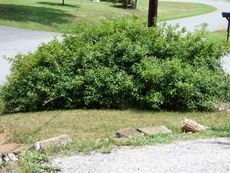 Forsythia Rejuvenation Pruning: Tips On Hard Pruning Forsythia Bushes
Forsythia Rejuvenation Pruning: Tips On Hard Pruning Forsythia BushesForsythias may start out as attractive landscape shrubs, but over time they can lose their luster. Learn more about hard pruning forsythia bushes once they've outgrown their space by clicking on the following article.
By Karen Boness
-
 Varieties Of Forsythia: What Are Some Common Forsythia Bush Varieties
Varieties Of Forsythia: What Are Some Common Forsythia Bush VarietiesKnown for its bursts of brilliant yellow color that arrive even before the first leaf unfurls, forsythia is a delight to behold. But what other types are there? Find out about some popular forsythia varieties in this article. Click here for more info.
By Jackie Carroll
-
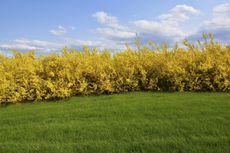 Planting Forsythia Hedges: Tips On Using Forsythia As A Hedge
Planting Forsythia Hedges: Tips On Using Forsythia As A HedgeIf you plan on using forsythia as a hedge, it is important to plant them correctly. This article has information on planting forsythia hedges and forsythia hedge pruning so you can find success with this type of hedge. Click here to learn more.
By Teo Spengler
-
 Can You Propagate Forsythia: How To Propagate Forsythia Shrubs
Can You Propagate Forsythia: How To Propagate Forsythia ShrubsForsythia bursts into bloom in late winter, well ahead of most other early-season shrubs. They look fantastic in groupings and shrub borders. If you can't get enough of them, read this article to find out about propagating forsythia plants.
By Jackie Carroll
-
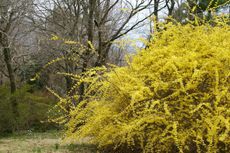 Tips For Growing A Weeping Forsythia Shrub
Tips For Growing A Weeping Forsythia ShrubA true harbinger of spring, forsythia blooms in late winter or spring. Weeping forsythia is slightly different from its cousin, the border forsythia, in that it has trailing branches. This article explains how to care for this large, graceful shrub.
By Jackie Carroll
-
 Forsythia Gall Treatment: How To Fix Phomopsis Gall On Forsythia Bush
Forsythia Gall Treatment: How To Fix Phomopsis Gall On Forsythia BushForsythia shrubs are well known for their beauty and tenacity, but even the toughest of these shrubs can become sickly in the presence of phomopsis galls. Read this article to find out how to manage this unsightly fungus.
By Kristi Waterworth
-
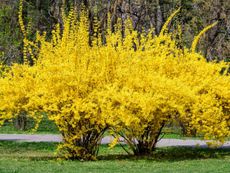 Reasons Why A Forsythia Will Not Bloom
Reasons Why A Forsythia Will Not BloomNothing says spring like those bright yellow blooms. But what happens when spring comes and nothing happens? If there are no blooms on the forsythia bush, it helps to pinpoint the issue. This article will help.
By Jackie Rhoades